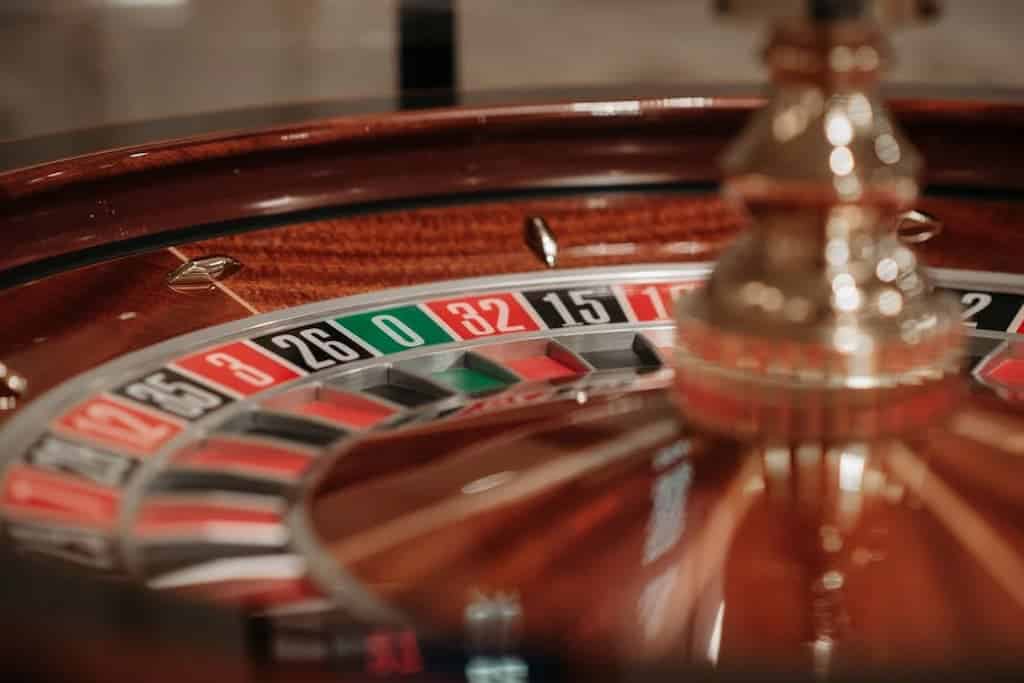The Martingale Betting System – What It Is and Why You Should Avoid It
The Martingale betting system is either famous or infamous, depending on your perspective. It is a progressive staking plan that is designed to guarantee a profit by doubling up stakes after every losing bet until a winner is found. Theoretically, the Martingale system can’t lose, but in practice, its use can be devastating. Here’s all you need to know about how the system works and why you should avoid it.
The Martingale System Explained
This is a staking plan that has been around since the 18th century. It was commonly used in casinos in France, most often at the roulette wheel. However, it has since been used on other games or events that pay odds of 1/1 for a bet that has a roughly even chance of winning or losing.
The way the Martingale system works is easy to explain. You start by staking 1 unit on an even money shot. If the bet wins, you take the profit and start over. If the first bet loses, you double the stake and bet 2 units on the next event. If that loses, you double the stake and bet 4 units on the next event. You continue in this manner, doubling up the stakes after each loser until you get a winner. When that happens, the winner, at odds of 1/1, will give you a return that covers all of your preceding losses and leaves you with a 1 unit profit left over.

Martingale Betting System Example
Let’s provide an example to show you how this works in practice. With the Martingale strategy, roulette bettors focus on betting on even-money outcomes such as red, black, odd, even, and so on. So, let’s say that we start betting on red, beginning with a stake of £1. Here’s how things would go if we had four losing bets and then a winner on the fifth bet:
Stake (£) Result Profit or Loss (£) Overall Profit or Loss (£) 1 Black -1 -1 2 Black -2 -3 4 Black -4 -7 8 Black -8 -15 16 Red +16 +1 As you can see, the Martingale roulette strategy made a £1 profit from one winning red out of five bets. That eventual 1 unit profit is constant when you are betting on outcomes that pay odds of 1/1, no matter how short or long the intervening losing run might be.
Martingale System in Sports Betting
While the Martingale betting system is most often associated with casino players, it has also been adopted by sports bettors. A Martingale sports betting system poses a few challenges because the probability of an outcome taking place isn’t fixed, as it is in casino games. What most bettors do is focus on even money shots and hope that the bookies have priced things up reasonably accurately. (For more information on betting odds and implied probability, see Betting Odds Explained).
Martingale System in Football
Those who use this system at football betting sites bet from match to match, selecting outcomes at odds of 1/1 or thereabouts. For this Martingale sports betting system, football bettors start with a very modest stake of £1 and then double after each losing bet until they eventually hit a winner. At that point, they start the sequence all over again, betting £1 on their next football selection.
Martingale System in Horse Racing
At horse racing sites, the Martingale system can be used by betting on form picks at odds of 1/1, which in most cases means market favourites. The exact same principles apply, but you need to bear in mind that there are usually a lot more possible outcomes in a horse race than there are in a football match. That doesn’t automatically mean that losing runs will be longer, but you shouldn’t be surprised when you encounter lengthy sequences of losing horses.
Advantages of the Martingale Betting System
The fact that we’re talking about an 18th-century betting system in the 21st century means that the Martingale method must have at least a few things going for it. And, at first glance, it really does. Here are some of the main advantages that are touted by fans of this system:
The Martingale is Simple
This is one of the simplest betting strategies around. It has just two rules: bet on even-money shots and double up after each loser. If you can do that, you can use the Martingale strategy. Of course, you need to keep track of your bets so that you always know how much to stake on the next one, but betting systems don’t get much simpler than this.
The Martingale is Flexible
We’ve seen how the roulette double-up strategy can be applied by football and horse racing bettors. But it doesn’t stop there. This progression can be used on any sport or event, just as it can be used on a variety of casino games. The Martingale system in sports betting is as flexible as any other strategy you’ll come across.
The Martingale Wins Every Time
On paper, the Martingale is a gambling system that never loses. As long as you bet at odds of 1/1 and follow the double betting progression, doubling stakes after every loser, the eventual winner will recoup all your losses and leave you with an overall profit of 1 unit.
Disadvantages of the Martingale Betting System
Unfortunately, all that glitters isn’t gold, and the Martingale strategy certainly isn’t. There are several drawbacks to using this system in practice, and those drawbacks far outweigh any of the advantages that we mentioned in the previous section. Consider the following:
Stakes Escalate Rapidly
Even if you started betting with just £1 on the first event, stakes would escalate rapidly when you hit a run of losers. After five losing bets, your stake on the sixth would be £32. Your stake on the tenth would be £512. And from there, you’d have to bet £1,024, £2,048, £4,096, and so on.
This makes the Martingale a system that most bettors simply can’t afford. Even if you could, would you really want to risk £4,096 to try and recover £4,095 in previous losses and make a profit of just £1? Before you answer, bear in mind that there’d be no guarantee that you’d win at that point either. Get a losing run of 15 bets, and your stake on the 16th would be £32,768.
For those of you who think that you’d never encounter such a losing run of even-money shots in practice, take a look at our Gambler’s Fallacy page. You’ll soon change your mind.
Bookmakers Have Limits
Let’s say, for the sake of argument, that you have the bank balance of Elon Musk and the common sense of a garden gnome. In other words, you’re willing to keep doubling for as long as it takes to make a £1 profit. Even then, you could face the problem of hitting the staking limits at online betting sites long before you find a winner. In that case, you’d end up losing a good chunk of your bankroll. You could start again, of course, but you’d need to win £1 quite a few times to repair the damage that’s already been done.
It’s All for a Measly Pound
At the end of the day, even if you get lucky and bet on a winner before you blow your bank or meet the betting limits, all you’ll come away with is £1 more than you had at the beginning. Take a walk around your local shopping centre, and you could probably find a £1 coin without risking a penny. You wouldn’t dream of betting even £100 on a 50/50 shot to try and win a £1 profit, so why get into a situation that could require you to bet even more for the same outcome?
Martingale Variations
Some bettors have developed variations on the Martingale gambling strategy in an attempt to overcome one or more of the disadvantages just mentioned. Three that we think are particularly worth mentioning are as follows:
Reverse Martingale Strategy
Whereas the Martingale betting system increases stakes after each losing bet, the Reverse Martingale strategy increases them after each winning bet. You would start by staking 1 unit on an even-money shot and keep staking 1 unit per bet until you get a winner. At that point, you would double your stake to 2 units. If you win again, double the stake to 4 units. If you lose at any time, you would start over with a 1 unit bet on the next event.
This approach is safer than the original Martingale, as the stakes only increase as you win. However, you need to quit while you’re ahead, or you could still lose money overall. And the big problem here is knowing when to quit.
Grand Martingale Strategy
This is an even more aggressive version of the original strategy, and it’s intended to give you a bigger profit when you eventually hit a winner. Instead of just doubling your stake, you double your stake and then add the first stake. For example, if you bet £1 and lose, you’d bet £2 + £1 = £3 on the next event. If that loses, you’d bet £3 + £3 + £1 = £7 on the next event, and so on.
While this approach will help you win slightly more when you bet on a winner, it increases the rate at which stakes grow during a losing run. That makes it even more dangerous than the straightforward Martingale, and it still has the disadvantages of requiring a bottomless bank and a bookmaker willing to accept bets with no limit.
Limited Martingale Strategy
The third variation we want to mention is the Limited Martingale strategy. This works in the same way as the original Martingale betting system, but it limits how many losses you can suffer before you call it quits and start again. You can choose your own limit, but it’s rarely more than six losing bets in a row. If you lose the sixth bet (or whatever happens to be the last bet of your limited sequence), you take the loss on the chin and start afresh next time.
This is much more sensible than using the Martingale with no limit in place, but it can still be costly. If you started betting with £1 and you were to have six losing bets in a row, you would come away nursing losses of £63. That means you’d need to succeed with the strategy 63 times in the future just to recoup the losses from one bad day. And if you have one or more additional losing days, you’ll be in an even worse position.
Why You Should Avoid the Martingale System
By this point, it should be clear that we aren’t recommending the Martingale betting system to anyone. In fact, we are actively encouraging you to avoid it. While the strategy might look good on paper and is guaranteed to win in theory, in practice, it requires a colossal bankroll, the ability to place bets without any limits, and the willingness to bet all day – or maybe even all week or month – for a potential profit of just £1. Call us old-fashioned, but we’ll give it a miss, and we strongly advise you to do the same.
FAQs
What is the Martingale strategy?
The Martingale strategy has been around since the 18th century. It involves betting on even-money shots and doubling your stake after each loser. It is intended to recoup all previous losses and give you a profit of 1 unit when you hit a winner.
What is an example of a Martingale bet?
Start with a £1 bet on an outcome at odds of 1/1. If it loses, bet £2 on the next event. If it loses, bet £4 on the next event. Continue doubling until you hit a winner. And make sure you have a hefty amount of money that you can draw from when you hit an extended losing run.
Is the Martingale betting system legal?
Yes, this is a perfectly legal staking progression. Of course, bookmakers can choose to limit how their customers bet, and stake limits will certainly exist that make Martingale gambling impractical when you hit a serious losing run.
Does Martingale betting work?
On paper, yes, because the mathematics are sound. In the real world, no, because you need a bottomless bankroll and a bookmaker that never limits your bets.
Ian Bruce joined Safest Betting Sites in 2024 as Senior Sports Editor to oversee the quality and usefulness of its gambling content. He originally developed an interest in betting after landing a winning Yankee on his first attempt. He then spent years figuring out how to replicate that success. Along the way, he became one of the UK’s leading writers on the topic of betting and gaming. Ian’s career has now spanned more than three decades, and his enthusiasm for systematic and responsible betting hasn’t waned one bit. However, his preferred approach to winning these days is Dutching, for the simple reason that “It’s a lot easier than landing Yankees.”
Latest Sign-Up Offers
9.522/04/249.505/04/249.715/04/249.522/03/249.502/04/24


